| 23 July |
• yesterday • tomorrow |
| Optional Memorial of Saint Bridget, Religious |
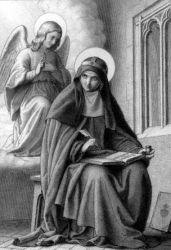
• Bridget of Vadstena
• Birgit, Birgitta, Bridgid, Brigida
Daughter of Birger Persson, the governor and provincial judge of Uppland, and of Ingeborg Bengtsdotter. Her father was one of the greatest landowners in the country, her mother was known widely for her piety, and the family were descendants of the Swedish royal house. Related to Saint Ingrid of Sweden.
Bridget began receiving visions, most of the Crucifixion, at age seven. Her mother died c.1315 when the girl was about twelve years old, and she was raised and educated by an equally pious aunt. In 1316, at age thirteen, Bridget wed prince Ulfo of Nercia in an arranged marriage. She was the mother of eight, including Saint Catherine of Sweden; some of the other children ignored the Church.
Friend and counselor to many priests and theologians of her day. Chief lady-in-waiting to Queen Blanche of Namur in 1335, from which position she counseled and guided the Queen and King Magnus II. After Ulfo's death in 1344 following a pilgrimage to Santiago de Compostela, Spain she pursued a religious life, for which she was harassed by others at the court. She eventually renounced her title of princess. Franciscan tertiary. Cistercian. Mystic, visionary, and mystical writer. She recorded the revelations given her in her visions, and these became hugely popular in the Middle Ages.
Founded the Order of the Most Holy Savior (Bridgettines) at Vadstena, Sweden in 1346. It received confirmation by Pope Blessed Urban V in 1370, and survives today, though few houses remain. Pilgrim to Rome, to assorted Italian holy sites, and to the Holy Lands. Chastened and counseled kings and Popes Clement VI, Gregory XI, and Urban VI, urging each to return to Rome from Avignon. Encouraged all who would listen to meditate on the Passion, and of Jesus Crucified.
1302 or 1303 at Finsta Castle, Uppsala, Sweden
• 23 July 1373 at Rome, Italy of natural causes
• buried in 1374 at the Vadstena, Sweden convent she had founded
7 October 1391 by Pope Boniface IX
• Europe
• Sweden
• widows
• abbess in Brigittine robes with a cross on her forehead, and holding a book and pilgrim's staff
• book
• head and cross
• nun enthroned, with Christ above her and hell below, while she gives books to the emperor and kings
• nun giving a book to Saint Augustine
• nun in ecstasy before the crucifix with instruments of the Passion nearby
• nun reading, holding a cross, with builders in the background
• nun with a cross on her brow witnessing the Birth of Christ, which she saw in one of her visions
• nun with shells, a sign of pilgrimage, sewn on her habit
• nun writing with a pilgrim's equipage nearby
• nun writing with an angel hovering over her shoulder, often whispering in her ear
• nun writing while Christ and the Virgin appear before her
• pilgrim's staff
• small child at the Scourging of Christ, which she saw in one of her visions
• heart marked with a cross
Eternal praise be to you, my Lord Jesus Christ, for the time you endured on the cross the greatest torments and sufferings for us sinners. The sharp pain of your wounds fiercely penetrated even to your blessed soul and cruelly pierced your most sacred heart till finally you sent forth your spirit in peace, bowed you head, and humbly commended yourself into the hands of God your Father, and your whole body remained cold in death. Blessed may you be, my Lord Jesus Christ. For our salvation you allowed your side and heart to be pierced with a lance; and from that side water and your precious blood flowed out abundantly for our redemption. Unending honor be to you, my Lord Jesus Christ. On the third day you rose from the dead and appeared to those you had chosen. And after forty days you ascended into heaven before the eyes of many witnesses, and there in heaven you gathered together in glory those you love, whom you had freed from hell. Rejoicing and eternal praise be to you, my Lord Jesus Christ, who sent the Holy Spirit into the hearts of your disciples and increased the boundless love of God in their spirits. Blessed are you and praiseworthy and glorious for ever, my Lord Jesus. - from prayers attributed to Saint Bridget
O Lord, make haste and illumine the night. Say to my soul that nothing happens without You permitting it, and that nothing of what You permit is without comfort. O Jesus, Son of God, You Who were silent in the presence of Your accusers, restrain my tongue until I find what should say and how to say it. Show me the way and make me ready to follow it. It is dangerous to delay, yet perilous to go forward. Answer my petition and show me the way. As the wounded go to the doctor in search of aid, so do I come to You. O Lord, give Your peace to my heart. Amen. - Saint Bridget
https://catholicsaints.info/saint-bridget-of-sweden/
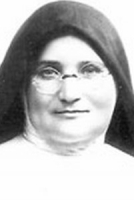
• Margarita María
• Margarita María López de Maturana y Ortiz de Zárate
• Margarita Maturana
• Mother Margarita de Maturana
• Mother Maturana
• Pilar López de Maturana Ortiz de Zárate
Pilar and her twin sister Leonor were the youngest of five children born to Juana Ortiz de Zarate and Vicente Lopez de Maturana. Both girls were known for their piety in their youth, and Leonor eventually joined the Carmelites of Charity. On 10 August 1903, Pilar entered the novitiate of the Vera Cruz Mercedarian Monastery at Berriz, Spain, taking the name Margarita. She taught school and later served as principal. By 1922 her health began to suffer, and she developed a duodenal ulcer that plagued her the rest of her life.
Even within a cloistered contemplative order, Margarita was drawn to missionaries, and every night spent time in prayer for their work; when interest in missionaries developed at her school, she formed a group dedicated to praying for them. She eventually felt the call to move from the contemplative life to missionary work, and to take like minded sisters with her. In September 1924 her house asked the superior general of their order to make the case for them, and on 23 January 1926 they were given approval for an experimental move to the missions. On 5 November 1926 a group reached Wuhu, China, and on 4 March 1928 another arrived in Saipan in the northern Marianas islands. Margarita was named Mother Superior of her house on 16 April 1927. On 11 November 1928 she arrived in Ponape in the Marianas on her first mission trip.
The work that she and her sisters did was so successful that on 17 May 1930 the Sacred Congregation for the Religious approved making the house in Berriz a Missionary Institute. On 30 July 1931 Mother Margarita was chosen first Superior General of Mercedarian Missionaries of Bérriz, a position in which she served her remaining years. She made two more lengthy mission trips to the south Pacific, but the ulcer eventually led to cancer, her health failed, and she returned home for treatment and to run the administration of her house. Today there are over 500 Missionary sisters working all over the planet.
25 July 1884 on the 3rd floor of 52 Tenderia Street, Bilboa, Vizcaya, Spain as Pilar López de Maturana y Ortiz de Zárate
12:15 am on 23 July 1934 at Donostia-San Sebastian, Berriz, Vizcaya, Spain of stomach cancer
• 22 October 2006 by Pope Benedict XVI
• recognition celebrated at Santiago Cathedral, Bilbao, Vizcaya, Spain by Jose Cardinal Saraiva
There are moments in life of special importance such as when the Lord shows us the way to be followed and then leaves it up to our will to respond. - Blessed Margarita
I want to make good use of the time God gives me and be ready when He finally calls me to cast myself into His arms forever; in an act of supreme abandonment. What a joy! So be it. - Blessed Margarita
https://catholicsaints.info/blessed-margarita-de-maturana/
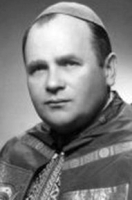
Vasil Hopko
Son of Anna Petrenko and Basil Hopko, poor, landless peasants. His father died when the boy was just a year old, and when he was four his mother emigrated to the United States to look for work. Educated in Hungary, graduating with honors in 1923. Trained at the Eparchial Seminary, Prjashev, Czechoslovakia. He had dreams of joining his mother in the United States, and of persuing his vocation there, but the cost of recurring health problems left him unable to afford to travel. When he finally decided to serve in his native land, he was suddenly cured, and realized he was been given a sign about his calling. Ordained on 3 February 1929. Parish priest in Prague where he was noted for a mission to the poor, the unemployed, and to students. Taught at the Eparchial Seminary in Prjashev. Awarded the title of Monsignor in 1936. Doctor of Theology in 1940. Auxiliary bishop of Prjashev, Slovakia on 11 May 1947.
Arrested on 28 April 1950 as part of the Communist government's suppression of the Greek Catholic Church. He was kept on starvation rations and tortured for weeks, he was eventually given a show trial and sentenced to 15 years for the "subversive activity" of staying loyal to Rome. He was repeatedly transferred from prison to prison, and continually abused. His health, physical and emotional, failed, and in 1964 he was transferred to a home for the aged and kept under guard there. Though he managed to overcome severe depression, and went on to minister to a group of 120 nuns imprisoned at the home, he never recovered his physical health.
On 13 June 1968 his original eparchy was restored, but a group of activists insisted that a Slovak bishop be appointed to the see; Basil was removed. Deep divisions occured throughout the eparchy, not all of which have yet been settled. Father Basil died without being able to resume leadership of his flock. His death was a direct result of imprisonment, and he is considered one of the many martyred by Communism.
21 April 1904 at Hrabské, Presovský kraj, eastern Slovakia
23 June 1976 at Presov, Presovský kraj, Slovakia
14 September 2003 by Pope John Paul II at Bratislava, Slovakia
I had to endure many difficult moments, which I would not wish even on my worst enemies. Nevertheless, I consider my prison days as a higher education in humility. In prison I learned a great many things, as how to be of service to others in their need. Prison in itself is not such a terrible place after all. What is frightening is the company one is forced to keep, being locked up in the same cell with all kinds of criminals, spies, insane, and some other strange characters. - Blessed Basil
https://catholicsaints.info/blessed-basil-hopko/
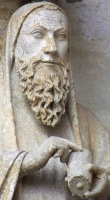
Ezechiel
Prophet, son of Buzi, exiled to Babylon about 598 BC. He began to prophesy five years later and continued for over twenty years. His prophecies form one of the books of the Old Testament and are given in forty-eight chapters. After a vision of the glory of the Lord, under various symbols, he foretells the fall of Jerusalem, its transgression, and the mark of those who are to be saved. He utters the destruction that will come on pagan nations and prophesies the restoration of Theocracy. God will demand penance, triumph over Gog and Magog, and establish a new kingdom of His own in which the city will be called, “The Lord is there” (Ezechiel 48). He is often quoted by Saint John in the Apocalypse; indeed there are many points of similarity between the writings of the Prophet and of the Apostle. He was buried in the sepulchre of Sem and Arphaxad, ancestors of Abraham. Many people were in the habit of going to his tomb to pray. Passages from the prophecy are read in the Divine Office during the first weeks of November.
https://catholicsaints.info/ezekiel-the-prophet/
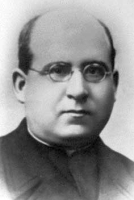
Studied at the seminary in Toledo, Spain. Priest. Joined the Diocesan Laborer Priests of the Sacred Heart of Jesus. Administrator of Spanish seminaries in Malaga, Badajoz, Seville and Plasencia, and the Spanish College of Rome, Italy. Director General of the Laborer Priests for three years. Founded the Society for the Promotion of Vocations in Seville to financially support seminarians. Published the periodcal Vocation Pages. Founded the women's congregation Disciples of Jesus in Toledo, Spain in 1934. Martyred by Communists in the Spanish Civil War.
18 September 1881 in Mora, Toledo, Spain
shot on 23 July 1936 in the Paseo del Tránsito in Toledo, Spain
1 October 1995 by Pope John Paul II
https://catholicsaints.info/blessed-pedro-ruiz-de-los-panos-angel/
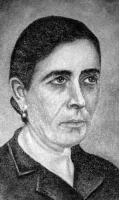
Lay woman in the Archdiocese of Barcelona, Spain. Married to José Gaudí Negre on 9 October 1910; they are not known to have had children. Widowed in 1926, she moved to a house just outside the convent of Minim nuns in Barcelona, Spain where her blood sister served as Mother Superior, and where she followed their spirituality and prayer life without taking vows. Kidnapped, tortured and martyred with her sister and eight other nuns by Communist forces in the Spanish Civil War.
15 August 1866 in Aniñón, Zaragoza, Spain
shot on the evening of 23 July 1936 at the Sant Genís dels Agudells highway, Horta, Barcelona, Spain
20 December 2012 by Pope Benedict XVI (decree of martyrdom)
27 October 2013 by Pope Benedict XVI
https://catholicsaints.info/blessed-lucrecia-garcia-solanas/
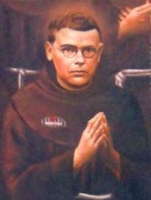
Cristino, Krystyn
12 June as one of the 108 Martyrs of World War II
Joined the Franciscan Friars Minor in 1928, making his solemn profession on 18 April 1933, taking the name Krystyn. Ordained on 21 June 1936, and served as parish priest in Wloclaweck, Poland. Arrested on 26 August 1940, deported, imprisoned, tortured and martyred for his faith by Nazis.
6 April 1909 in Slona, Malopolskie, diocese of Tarnow, Poland
• 23 July 1942 in the Dachau prison camp, Oberbayern, Germany
• body burned in the camp crematorium and his ashes scattered
13 June 1999 by Pope John Paul II
https://catholicsaints.info/blessed-wojciech-gondek/
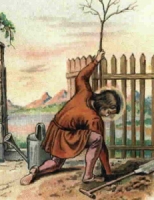
• Phocas of Hovenier
• Phocas of Sinope
• Focas, Fokas
Innkeeper. Gardener. Martyr. Used surplus crops to feed the poor. Even cared for the soldiers sent to execute him for being a Christian; he fed and sheltered them, and dug his own grave.
beheaded c.303 in Sinope, Pontus (in modern Turkey)
• against insect bites
• against poisoning
• against snake bites
• agricultural workers, farm workers, farmers, field hands
• boatmen, mariners, sailors, watermen
• gardeners
• husbandmen
• market-gardeners
https://catholicsaints.info/saint-phocas-the-gardener/
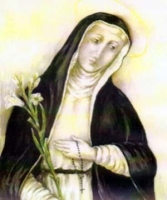
• Vanna of Orvieto
• Giovanna of Orvieto
Born to a peasant family and orphaned at age five. Worked as a seamstress and embroiderer. Refused marriage as a young woman, and became a Dominican tertiary at Orvieto, Italy. Visionary, prophet, known for a life of deep prayer; reputed miracle worker and stigmatist.
c.1264 at Carnaiola, Italy
23 July 1306 of natural causes
11 September 1754 by Pope Benedict XIV (cultus confirmed)
• embroiderers
• seamstresses
• Italian working women (chosen in 1926)
https://catholicsaints.info/blessed-jane-of-orvieto/
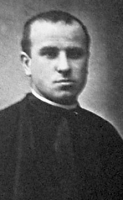
Studied at the seminary of Seo de Urgel. Ordained on 15 April 1911. Member of the Diocesan Laborer Priests of the Sacred Heart of Jesus on 12 August 1914. Director of the seminary of Segovia, Spain. Dean of the College of Vocations in Toledo, Spain. Martyred by Communists in the Spanish Civil War.
24 June 1888 in Pons, Lleida, Spain
shot on 23 July 1936 in the Paseo del Tránsito in Toledo, Spain
1 October 1995 by Pope John Paul II
https://catholicsaints.info/blessed-josep-sala-pico/

• John the Roman
• John the Ascetic
Pilgrim with his friend Germanus to the Holy Lands. Monk in Egypt and Marseilles, France. Studied under Saint John Chrysostom, who ordained him a deacon. Defended Chrysostom in Rome, Italy. Founded the abbey of Saint Victor and a convent at Marseilles. His writings were recommended by Saint Benedict as treatises on the training of monks.
c.360
433 of natural causes
• Conferences
• Institutes
https://catholicsaints.info/saint-john-cassian/
Susanna of Constantinople
Born an aristocrat, she was orphaned young and inherited a large fortune. Though she spent her money to support the poor, she attracted a steady stream of greedy suitors. To avoid marriage to a man named Agarenus, a union supported by Emperor Basil the Macedonian, Anne fled from Constantinople to Epirus in Leucadia c.869. She lived there the rest of her life as a hermitess.
in 840 in Constantinople
• 918
• may have been martyred in Constantinople, but records are unclear
https://catholicsaints.info/saint-anne-of-constantinople/
Premonstratensian friar. Canon on the Norbertine monastery of Notre-Dame, Belval, Argonne, France. Abbot of the house in 1316. A physically small man, he was known as a man of great faith, strict with his own behavior, generous to the poor. Under his leadership, the house became a center for spiritual growth, and many of its brothers became abbots of other houses.
late 13th century France
1348 at the Norbertine monastery of Notre-Dame, Belval, Argonne, France of natural causes
https://catholicsaints.info/blessed-beaudoin-of-beaumont/
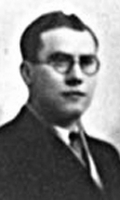
Baptized at the age of 2 days. Salesian Brother, making his vows in Carabanchel Alto, Madrid, Spain on 16 July 1926. Head tailor for colleges in the La Coruna, Astudillo and Madrid in Spain. Martyred in the Spanish Civil War.
31 October 1908 in San Martín de Ubierna, Burgos, Spain
shot on 23 July 1936 in Madrid, Spain
28 October 2007 by Pope Benedict XVI
https://catholicsaints.info/blessed-emilio-arce-diez/
Hermitess with Saint Redempta near the church Mary Major in Rome, Italy. Spiritual student of Saint Herundo in Palestine. Helped form a small community of nuns in Rome. Earned the praise of Pope Saint Gregory I the Great. Paralyzed for the last years of her life.
c.580 of natural causes
• against bodily ills and sickness
• sick people
https://catholicsaints.info/saint-romula-of-rome/
Valerian of Lérins
Monk at Lérins, France. Bishop of Cimiez, France. Attended the Council of Riez in 439, and the Council of Vaison in 442. Some of his written homilies have survived.
c.460
https://catholicsaints.info/saint-valerian-of-cimiez/
Franciscan tertiary. Noted in Franciscan writings for his effectiveness against demons.
latter 15th century, possibly in Florence, Italy
1525 in Corsica (part of modern France) of natural causes
https://catholicsaints.info/blessed-mariano-brandi/
• Severus of Bizia
• Severus of Wiza
Brought Saint Mennone the Centurian to Christianity. Martyred in the persecutions of Diocletian.
Bizye, Thrace (in modern Turkey)
https://catholicsaints.info/saint-severus-of-bizye/
Hermitess near the church of Saint Mary Major in Rome, Italy with Saint Romula and Saint Redempta. Saint Gregory the Great thought highly of them.
at Rome, Italy
c.580 of natural causes
https://catholicsaints.info/saint-herundo/
Fifth-century hermit in northern France. Martyr.
British Isles
• at Macé, France
• relics enshrined in Bayeaux, France
https://catholicsaints.info/saint-rasyphus-of-mace/
Fifth-century hermit in northern France. Martyr.
British Isles
• at Macé, France
• relics enshrined in Bayeaux, France
https://catholicsaints.info/saint-ravennus-of-mace/
Mercedarian friar. In 1343 he freed 116 Christians who had been enslaved in Algiers by Muslims; as he travelled through the region he managed to convert many Muslims to the faith.
https://catholicsaints.info/blessed-juan-de-luca/
Holy ascetic woman who lived near the church of Saint Mary Major in Rome, Italy.
c.580
https://catholicsaints.info/saint-redempta-of-rome/
Primitia, Privata
Martyr.
Rome, Italy, date unknown
https://catholicsaints.info/saint-primitiva-of-rome/
Martyred in the persecutions of Diocletian.
beheaded c.302 in Rome, Italy
https://catholicsaints.info/saint-theophilus-of-rome/
Mercedarian friar. Missionary. Martyr.
shot with arrows in 1619
https://catholicsaints.info/blessed-juan-de-montesinos/
Martyred in the persecutions of Diocletian.
beheaded c.302 in Rome, Italy
https://catholicsaints.info/saint-trophimus-of-rome/
Martyr venerated in Rome, Italy from early times, but no details about him have survived.
https://catholicsaints.info/saint-rasyphus-of-rome/
Martyr.
tied to a stake and shot with arrows
https://catholicsaints.info/saint-apollonius-of-rome/
Mercedarian friar. Bishop.
Italy
https://catholicsaints.info/blessed-leonard-da-recanati/
Companion of Saint Petroc in 6th century Cornwall, England.
https://catholicsaints.info/saint-conan-of-cornwall/
Martyr.
beheaded
https://catholicsaints.info/saint-eugene-of-rome/
Seven Christians, some lay people, some members of the Missionaries of the Sacred Hearts of Jesus and Mary and some of the Franciscan Daughters of Mercy, who were martyred in two groups on the same day in the Spanish Civil War.
• Catalina Caldés Socías
• Francesc Mayol Oliver
• Miquel Pons Ramis
• Miquela Rul-Làn Ribot
• Pau Noguera Trías
• Prudència Canyelles Ginestà de Aguadé
• Simó Reynés Solivellas
23 July 1936 in Barcelona, Spain
28 October 2007 by Pope Benedict XVI
https://catholicsaints.info/martyrs-of-barcelona/
An unknown number of Christians killed for their faith during the 9th century war between the Greek Emperor Nicephorus and the Bulgars.
https://catholicsaints.info/martyrs-of-bulgaria/
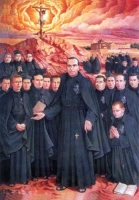
A group of nine Passionist priests, brothers and clerics who were martyred together in the Spanish Civil War.
• Anacario Benito Nozal
• Felipe Ruiz Fraile
• Felipe Valcobado Granado
• José Osés Sainz
• José Ruiz Martinez
• Julio Mediavilla Concejero
• Laurino Proaño Cuesta
• Manuel Pérez Jiménez
• Maurilio Macho Rodríguez
22 July 1936 in Carabanchel Bajo, Madrid, Spain
1 October 1989 by Pope John Paul II
https://catholicsaints.info/martyrs-of-carabanchel-bajo/
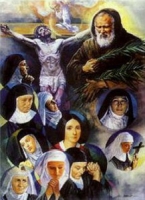
A lay woman and nine Minim nuns who were martyred together in the Spanish Civil War.
• Ana Ballesta Gelmá
• Dolors Vilaseca Gallego
• Josefa Pilar García Solanas
• Josepa Panyella Doménech
• Lucrecia García Solanas
• Maria Montserrat Ors Molist
• Mercè Mestre Trinché
• Ramona Ors Torrents
• Teresa Ríus Casas
• Vicenta Jordá Martí
23 July 1936 at the Sant Genís dels Agudells highway, Horta, Barcelona, Spain
27 October 2013 by Pope Benedict XVI
https://catholicsaints.info/martyrs-of-horta/
Five Passionist clerics who were martyred together in the Spanish Civil War.
• Abilio Ramos y Ramos
• Epifanio Sierra Conde
• José Estalayo García
• Vicente Díez Tejerina
• Zacarías Fernández Crespo
shot on 23 July 1936 in Manzanares, Ciudad Real, Spain
1 October 1989 by Pope John Paul II
https://catholicsaints.info/martyrs-of-manzanares-23-july/
• Our Lady of Altino
• Panagia Evangelistria
• Anna of Lefkas
• Beatrix d'Este III
• James I of Aragon
CatholicSaints.Info Portable Edition